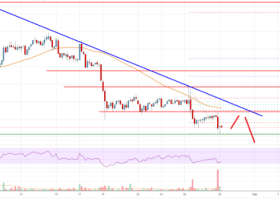Keeping journal record of your actions through proper documentation is an effective method for determining and analyzing your position in the financial trade space. Similarly to how a scientist records his or her research and experiments, the same concept applies to trading. However, it is surprising that the majority of market sector traders currently do not use trading journals. This is primarily due to a lack of education or awareness regarding them.
A trading journal can provide traders with numerous advantages, allowing them to stay ahead of the competition while also monitoring their own performance. Not only that, but trading journals may also be presented as evidence in the event of a legal matter. If you are unfamiliar with trading journals, this guide will help you understand what they are and how to use them for trading.
Regarding Trading Journals
A trading journal contains a log of every action taken during the trading process. Noting that a trading journal is not a brokerage account statement, a trading journal is essentially a record of your trading activities and their outcomes, providing a sort of abridged version of your trading position.
With a trading journal, every successful trading activity follows a specific plan, and the trading journal’s purpose is to record information about each successful/failed trade and the associated trading strategy. Using the records contained in a trading journal, a trader can effectively determine the potential of a future trade without needing to observe the market as a whole.
Creating a trading journal is typically a simple task, requiring only a few tools such as Microsoft Excel and Word, which saves a significant amount of time compared to searching for additional trading journal solutions. Although there are specialized trading journal solutions available online, the majority of trading journal users are familiar with MS Excel and Word. Utilizing well-organized spreadsheets and note-taking software will help you to be more disciplined and increase your trading consistency.
Even if your trading strategy is a bit unsure, it is essential to keep track of all your trading activities. By keeping this in mind, you can gain an understanding of when and why situations become negative, allowing you to make better decisions. Some claim that a trader’s trading journal determines whether he or she will be successful or fall behind the competition.
What should a Trading Journal contain?
Minimum requirements for a trading journal include a record of your daily profits and losses, as well as information about the market situation. However, it is recommended that a trading journal be more comprehensive. Your reflections on your trading decisions, how they played out if successful, and how they can be useful in the future.
Small details about your entry and exit provide a much clearer picture of your trading performance, allowing you to adapt your trading strategies to the market conditions. In simpler terms, the more information you store, the more insight you will gain into whether or not your trading strategies are successful. The topic is elaborated upon further.
Benefits of Keeping a Trading Journal
Utilizing a trading journal has a number of useful advantages that can assist a trader in maintaining a good trading plan, which consists of the rules and guidelines you seek in terms of trading strategies, risk management, and trading mindset. Trading journals help you understand your strengths and weaknesses in relation to your trading activities and record, enabling you to strengthen your next trading strategy and make better decisions.
Using and analyzing the records stored in the trading journal, for instance, a person can decide whether to use crypto derivatives or to begin the process of reinvesting cryptocurrency profits. Decisions made using a trading journal are devoid of judgmental errors and biased beliefs, protecting you from unwanted and useless factors affecting your trading goals and eliminating the factor of time and resource waste.
Whether you are a novice or an experienced trader, a trading journal can help you effectively manage your trading strategy by providing insight into the next trading strategy you will need to implement to maintain your market presence. To be a successful trader, you must have a framework that enables you to generate profits and develop superior trading strategies. The framework can highlight your level of trading success and help you avoid future market difficulties.
Beginner traders frequently err when they fixate solely on the attractive rewards. Consequently, if you have a solid transactional history, you can use careless entry points or acquire more cryptocurrencies. With a trading plan, you can maintain your concentration on your objectives and drastically reduce the likelihood of making a foolish and risky trading decision.
Forex trading is another example of a field that is highly influenced by an individual’s mentality. The majority of forex traders are susceptible to negative mental emotions, which compel them to make ineffective and careless decisions and degrade their performance. A trading journal allows users to learn from their mistakes and control their emotions when trading on the market.
As previously stated, trading journals also encourage users to accept responsibility for their actions. A properly managed and organized track record can be useful in the event of legal issues or for determining whether your trading career is generally successful or unsuccessful. A successful track record can also be a great source of motivation for ambitious traders, giving them the ability and confidence to advance their careers.
Now that we have covered the fundamentals of trading journals, we will move on to the creation and implementation of one.
Developing a Trading Diary
As mentioned in the preceding section, you can use virtually any application, such as Microsoft Excel or Google Sheets, that allows you to create and manage spreadsheet files to store a record of your trading activities and their outcomes. In addition, it is recommended to use a note-taking application, such as Microsoft Word or another, in order to keep track of your general thoughts regarding trading activities.
If you do not want to spend the time to create a trading journal template yourself, there are a variety of online resources that offer excellent examples. Regardless of which template you select from the source, you must ensure that these templates contain all the necessary trading-related columns and headings for storing useful information about trading activities.
In addition, you can place an image of the trading chart you followed alongside the relevant trade in which it was implemented, allowing you to analyze without having to recall anything.
Now let’s move on to recognizing and comprehending the essential columns and components of a trading journal spreadsheet and note file.
Financial Instruments
In this column, you should list the asset’s name and type, as well as the trading platform you used to trade it. For instance, Ethereum (ETH) on Binance should be listed within the column.
Time and Date
The exact dates and times you executed the trades, as well as any special considerations that led to the selection of those dates. For instance, you purchased $100 worth of Bitcoin on July 4 during a trading lull when Bitcoin displayed a price decline at 2:00 pm. During lulls, the value of cryptocurrencies declines because news and stories have already been published by noon.
Investing Positions
It is essential to keep track of both your short and long positions on the market in order to modify your trading strategy. By deciding to take a long position, you as an investor gain more knowledge about cryptocurrencies with the expectation that their prices will rise in the future, allowing you to sell them for a profit.
As for the short position, investors borrow cryptocurrencies and then sell them at the current market price. When the price valuations decline, the investor buys the same cryptocurrencies at a lower price, returning the borrowed cryptocurrency and pocketing the profit difference.
Prices and Loss Limits
Entry and exit prices are also useful columns to monitor. The entry price is the price at which the trading activity is initiated, while the exit price is the price valuation at which the trading activity was concluded. Investors can initiate a stop-loss in trading, allowing them to execute a sell order when their sale price objective is reached.
Trade Size
In order to have a clear understanding of the number of risks involved in the trading activity, it is essential to record the “tradable amount” in the trading journal. For instance, you risk 70% of the tradable value in a single trading instance if the tradable value is $200 and you execute a trade using ADA with $170.
Revenues and losses
The results of the trading activity performed in conjunction with the trading strategy should be accurately recorded, regardless of whether they were successful or unsuccessful. This will allow you, as the trader, to gain a much clearer understanding of what works and what does not, allowing you to make better decisions in the future.
Side Notes
Taking detailed notes about your decisions and trading strategies is equally important to statistical data when analyzing your situation. Similarly to the importance of quantity, the significance of quality is also high. This can be accomplished using any documentation application, including Microsoft Word, Overleaf Latex, and others.
Charts illustrating
Creating a chart of your activities is also an effective way to monitor your performance. There are numerous chart creation tools available online. Once you have formulated a chart of your performance metrics, take a snapshot of it and either save it in a specific folder on your system or include it in the document alongside the relevant trade so that it is easily accessible if you need to reevaluate your performance levels.
Beginning and ending times in the chart must be indicated by a vertical line or text. Notate the specifics of the major economic events that caused you to change course. Continue to document everything, including daily market conditions, the number of trades, profits, losses, mistakes, and results. The goal is to make as many effective highlights on the chart as possible, keeping in mind that the chart should not become overly crowded.
This will not only reveal your future, but it will also give you a real-time perspective on the market’s relative performance.
Utilizing a Trading Journal Successfully
Now that we understand the requirements and construction of a trading journal, we will move on to trading journal usage. As with all things, it is impossible to have a perfect trading journal. Each trader should investigate the metrics they require or be advised not to utilize them when entering their trades into the journal. A trading journal must be designed with this concept in mind.
Utilize the note-taking application to document the rationale behind the consideration of a particular trading strategy and position. In order to eliminate negative effects on your overall performance, it is essential to include information about the highlighters you used when observing the markets. In addition, you should include a justification for the effectiveness of the trading concept you employed.
Examining your trading proposals in greater detail will help you determine the strengths and weaknesses of each individual trade.
Then, proceed to your spreadsheet file and continue recording your day-to-day trading activities. It is essential to keep this document organized and up-to-date in order to obtain more accurate results. Spreadsheet applications such as Microsoft Excel include mathematical equations that allow you to quickly and automatically calculate certain metrics. Repeat the procedure, this time recording the results of the trading activity following its conclusion.
A daily review of your spreadsheet file is essential for gaining insight into the severity of your exposure and the likelihood of your portfolio’s improvement. You are responsible for determining where you stand in the market and how you can improve your overall standing. Utilizing a trading journal enables your trading career to be more performance-driven as opposed to being influenced by harmful emotions.
The next step is to learn how to review the overall trading journal, which is discussed in greater depth in the following section of the article.
Reviewing a Trading Journal is Crucial
Now that you have established a reliable record of your trading activities, you must review your trading performance on a weekly and a monthly basis, looking back at your past trades. This will assist you in identifying common issues, highlighting your strengths and weaknesses so you can develop more effective strategies.
Taking snapshots of your trading activities as an alternative to keeping a journal can be effective, but it cannot match the level of detail contained in a well-organized trading journal. It is of the utmost importance to adhere to a routine review schedule in order to better evaluate every trading action taken.
Concluding Remarks
Utilizing a trading journal is regarded as a highly effective method for staying ahead of the competition in financial trading, as it provides a clear view of your market performance, your strengths, your weaknesses, the amount of money you made and the amount of money you lost in the event of a failed trading activity. Not only in the financial sector, but in all other fields as well, it is essential to maintain accurate records.
This not only helps you remember things after the fact, but it also helps you become more accountable for each action you take and increases your productivity by eliminating decisions that waste your time and resources. Creating and utilizing a trading journal is simple; therefore, now that you are armed with this knowledge, start immediately and excel in the trading world.








Leave a Reply